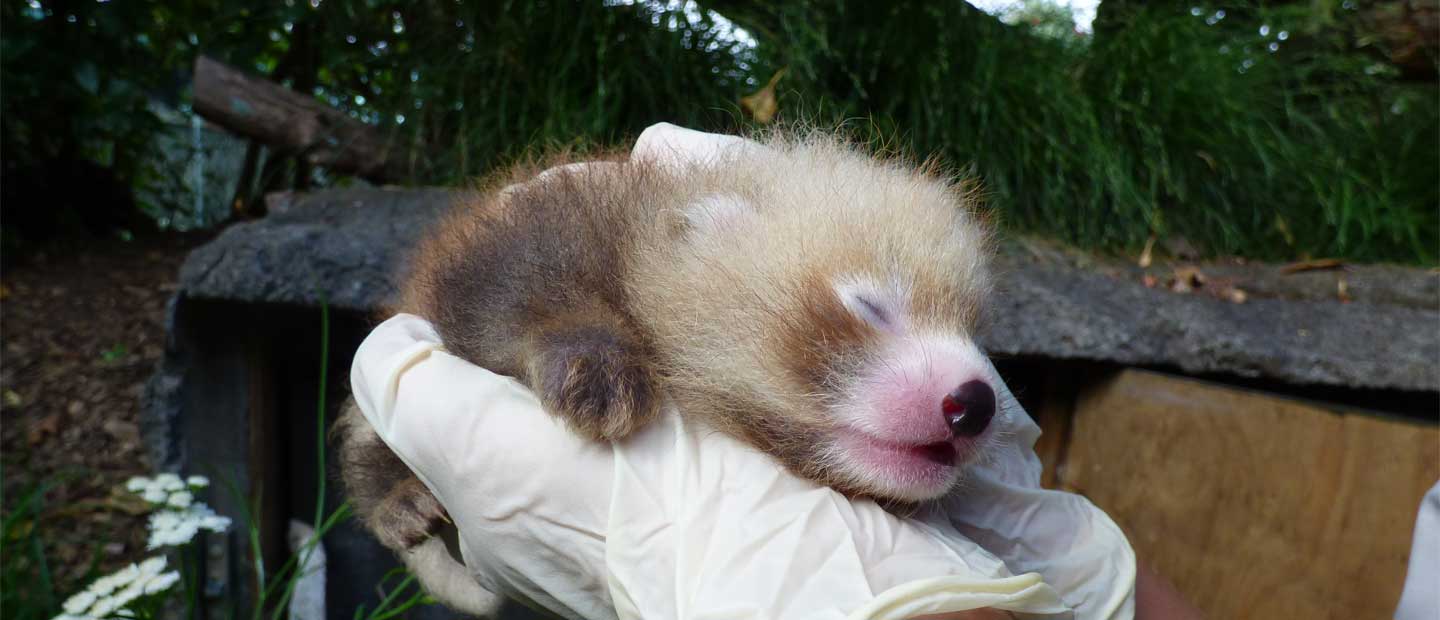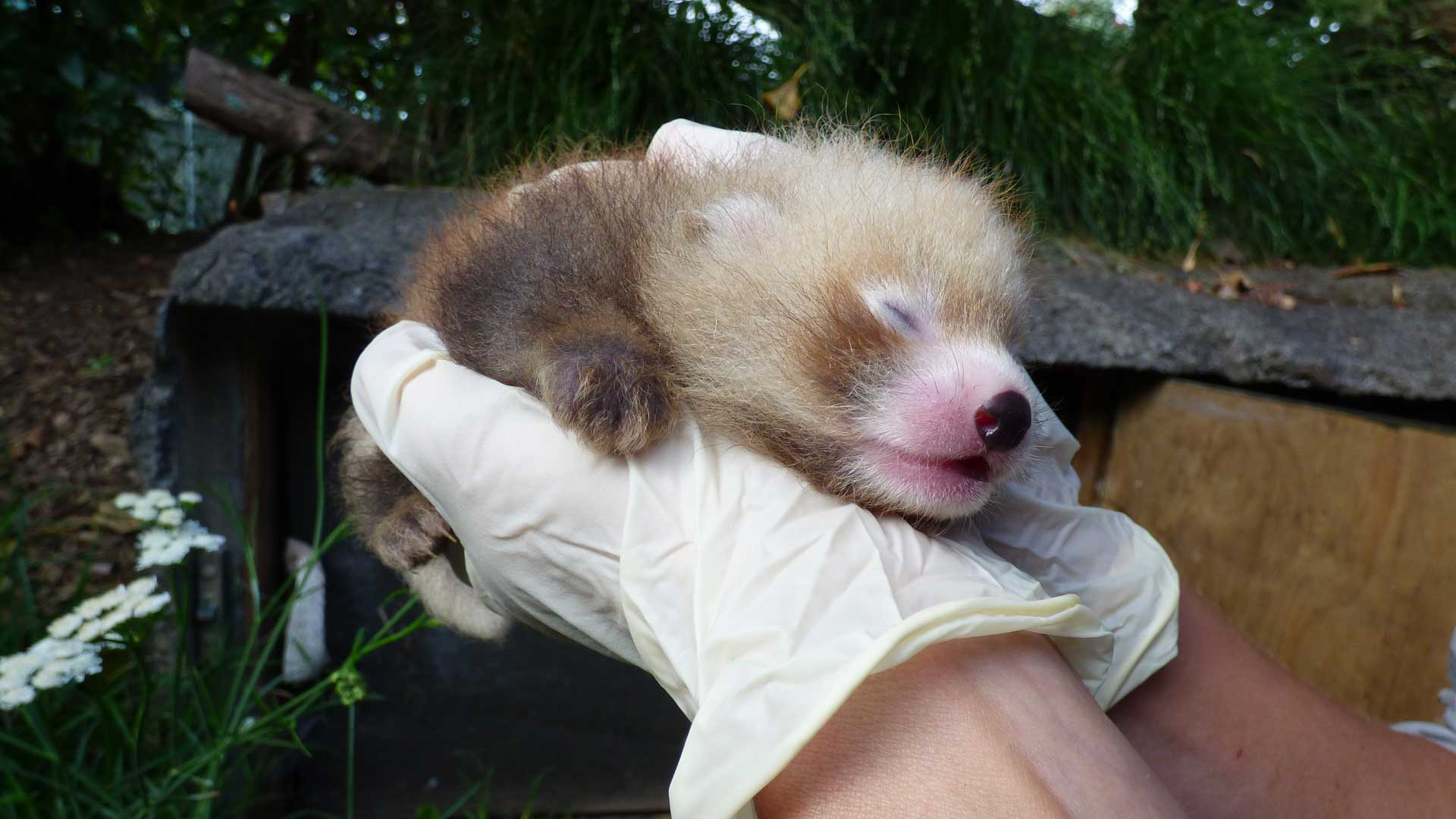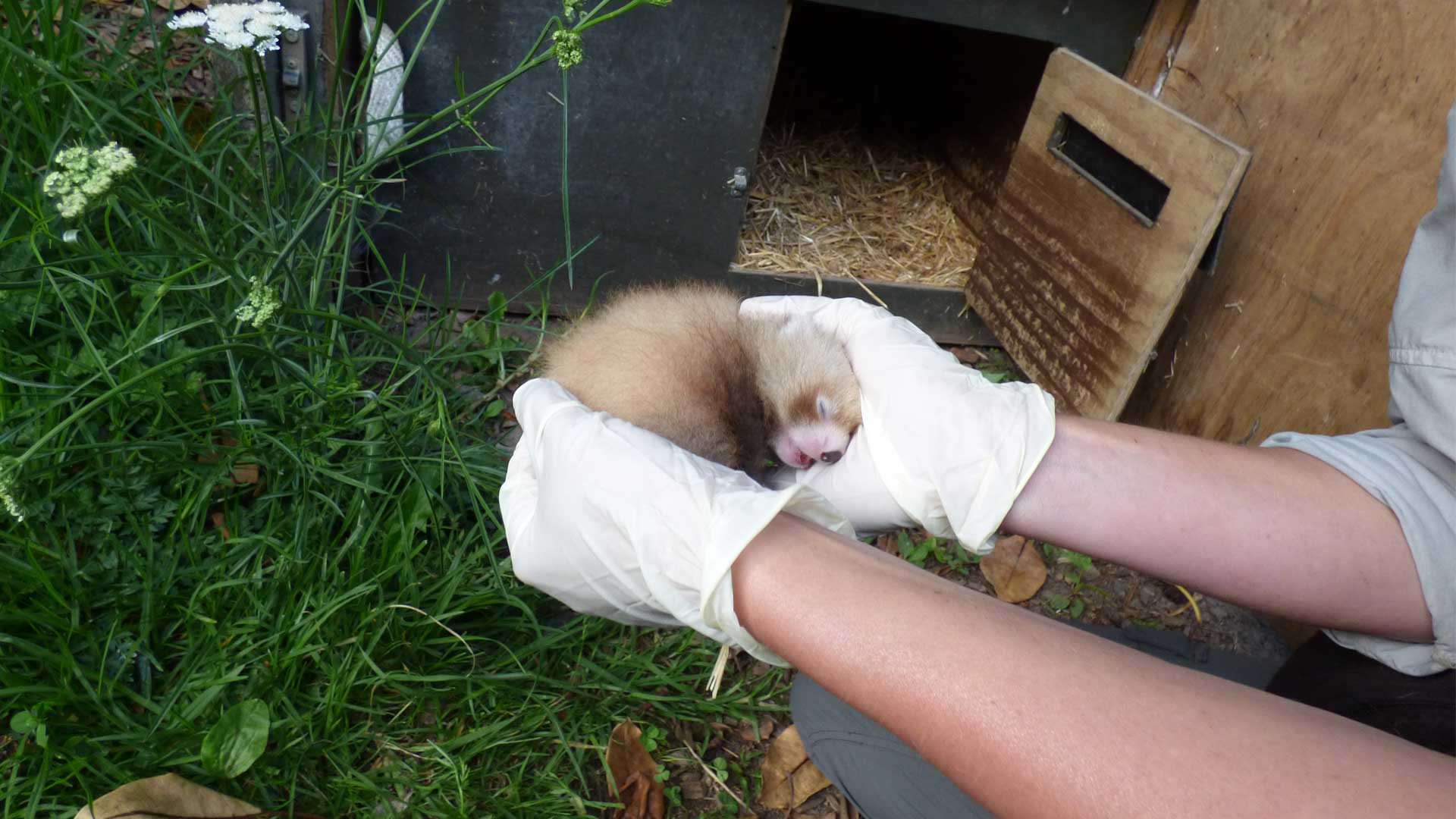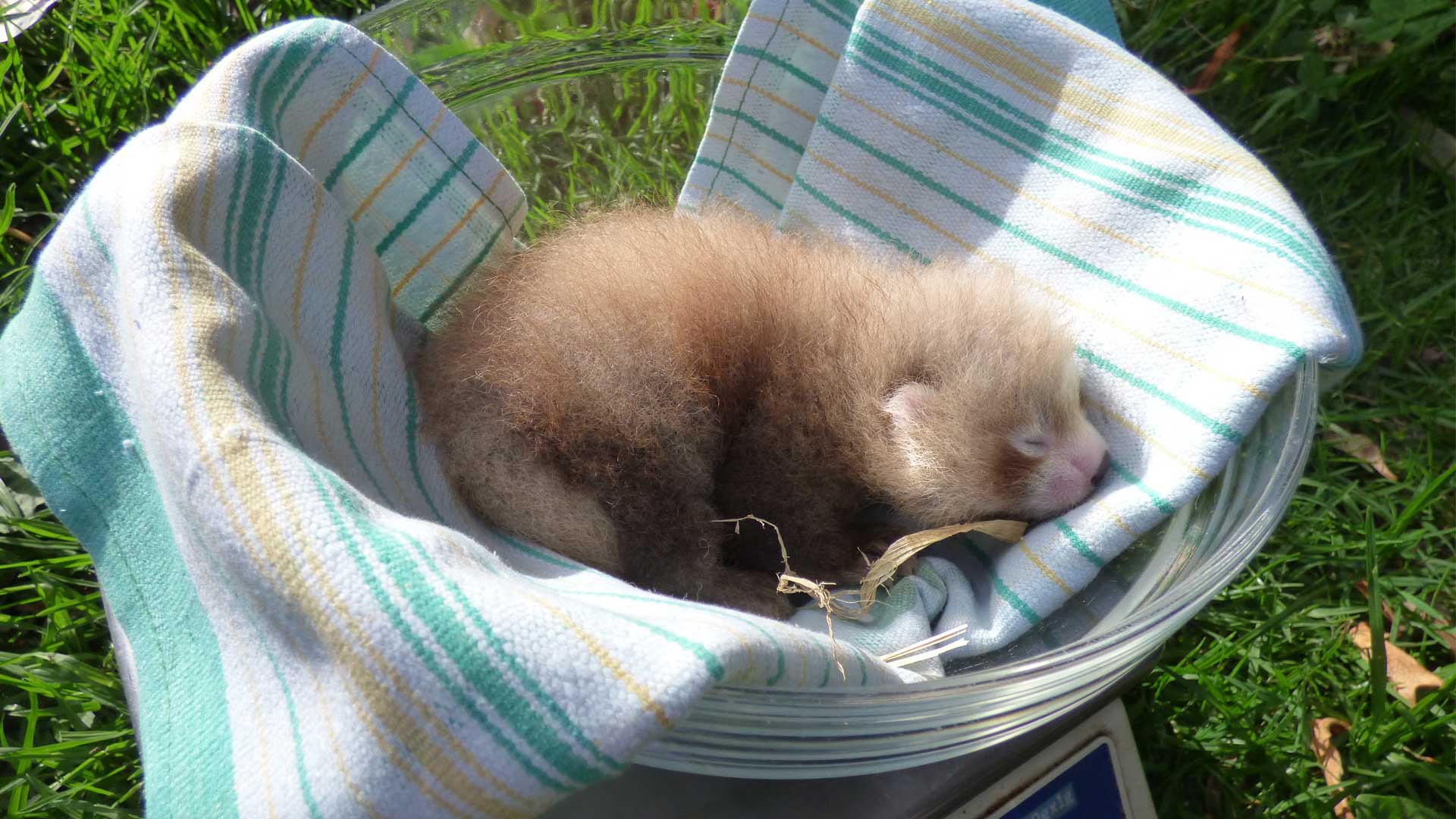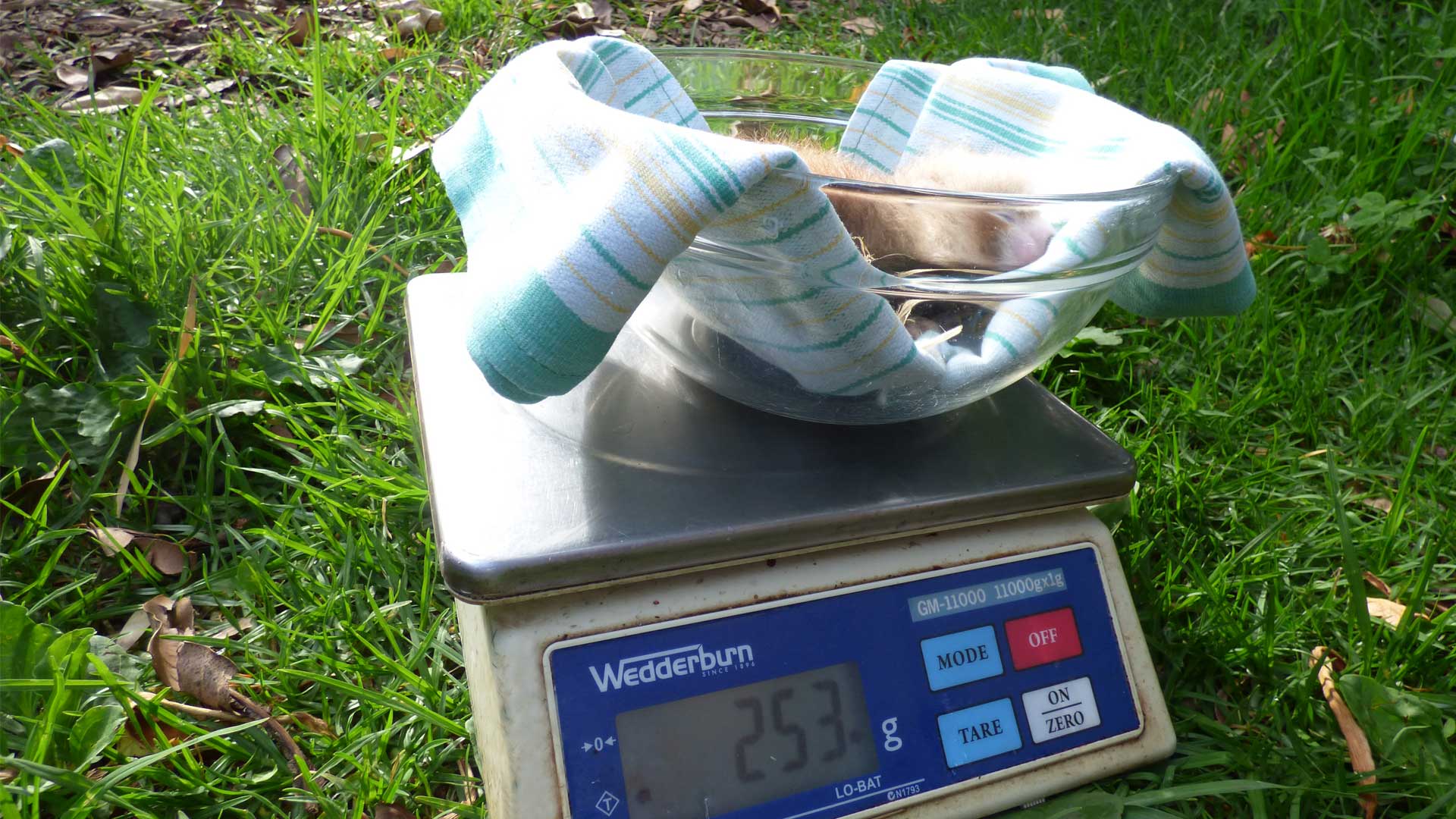Auckland Zoo is celebrating the birth of a Nepalese red panda cub, describing its delivery, a little earlier than anticipated, as “a precious early Christmas present”.
The tiny arrival to first-time parents, mum Khela and dad Ramesh, is estimated to have weighed around 100gm when born overnight on 1 December. Now over 250grams, the newborn is a very valuable addition to zoos’ international breeding programme for this ‘Endangered’ species (IUCN Red List) under threat from deforestation and illegal hunting.


